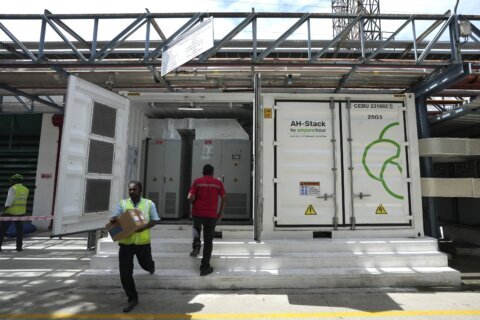One of the main reasons why income-oriented investors prefer real estate investments trusts, or REITs, is the potential for higher-than-average, consistently paid dividends. For investors, the REIT structure offers a unique blend of real estate exposure, liquidity and present income, along with the potential for long-term capital appreciation.
“REITs are companies that own, operate or finance income-generating real estate properties,” says Rohan Reddy, director of research at Global X ETFs. “They are required to distribute at least 90% of their taxable income as dividends to shareholders, which makes them a popular choice for investors seeking regular income.”
Within the REIT universe, investors can set screens to pick and choose REITs with particular characteristics. For instance, an investor seeking exposure to commercial property prices may opt to only invest in REITs that hold office properties.
[Sign up for stock news with our Invested newsletter.]
Another popular way to filter REIT picks is by dividend yield. By screening for REITs that have historically paid or are projected to pay higher-than-average dividend yields compared to peers, investors can potentially target a higher level of income.
“A high-yield REIT generally has a yield of around 5%, but there is no hard-and-fast rule,” says Paul Peeler, financial advisor at Integrated Financial Group. “That being said, when an investor is investing in any REIT, high yield or not, there are several additional factors that should be considered: management, dividend history and property composition.”
Like any other investment, yield-chasing REITs may not be the best course of action. While a high dividend might be alluring, investors should always assess the fundamentals of the REIT to make sure it isn’t a yield trap. Investors should also keep in mind that dividends are never guaranteed, even if a particular high-yield REIT has a long track record of consecutive payments.
“High-yield REITs may offer higher dividend yields, but they also carry a greater risk of dividend reduction or suspension,” says Adam Littlefield, chief real estate officer at Investment.com. “During economic downturns, the properties owned by high-yield REITs may experience lower occupancy rates, reduced rental income or difficulty in securing tenants, which could negatively impact their dividend payments and share price.”
Finally, there’s the matter of tax efficiency to keep in mind. “High-yield REITs are generally considered a tax-inefficient investment,” Littlefield says. “Consider holding high-yield REITs in tax-advantaged accounts such as a Roth IRA.”
Here are eight possible high-yield REITs that investors can buy in 2023:
| REIT | Dividend Yield |
| Easterly Government Properties Inc. (ticker: DEA) | 7.8% |
| National Storage Affiliates Trust (NSA) | 6.1% |
| W.P. Carey Inc. (WPC) | 6.2% |
| Getty Realty Corp. (GTY) | 5.1% |
| Federal Realty Investment Trust (FRT) | 4.9% |
| Annaly Capital Management Inc. (NLY) | 13.8% |
| Blackstone Mortgage Trust Inc. (BXMT) | 13.6% |
| KKR Real Estate Finance Trust Inc. (KREF) | 15.1% |
Easterly Government Properties Inc. (DEA)
“DEA’s government tenants makes it less vulnerable to falling employment rates and tenant defaults during economic downturns,” Reddy says. Currently, DEA’s 86 properties include notable U.S. federal government tenants such as the Federal Bureau of Investigation, the Internal Revenue Service and the Drug Enforcement Administration. Eighty-five of these properties are leased to U.S. government tenants.
For the first quarter of 2023, DEA paid out a dividend of 26.5 cents per share on May 23. Currently, the REIT sports a dividend yield of 7.8%, which is higher than most of its sector peers. To hedge against the risk of further interest rate hikes, DEA also recently entered into three interest rate swaps with a notional value of $100 million each.
National Storage Affiliates Trust (NSA)
“Self-storage REITs benefit from a combination of lower costs, high demand and short-term lease structures, which has enabled the sector to steadily increase income,” Reddy says. “This has helped the industry generate above-average total returns over the years.” A mid-cap pick here in this industry is NSA, which, since its debut in April 2015, has roughly quadrupled in price with all dividends reinvested.
NSA recently declared a dividend of 56 cents per common share on May 25, payable on June 30 to shareholders of record as of June 15. Annualized, this is a dividend payout of $2.24 and represents a 1.8% increase from the previous quarter. Assuming the REIT’s current share price and recent dividend rate remain stable, investors can expert a dividend yield of 6.1%.
W.P. Carey Inc. (WPC)
Not all REITs have a narrow focus like DEA or NSA. Some REITs have a more diversified portfolio composed of tenants and properties from numerous different industries. A great example is WPC. “WPC is classified as a diversified REIT due to its investments in a variety of property types, rather than focusing on a single type of real estate,” Reddy says.
Currently, WPC’s portfolio spans industrial warehouses, office buildings, retail outlets and self-storage properties. Investors looking for international exposure may also like WPC thanks to its overseas portfolio of properties. “Additionally, W.P. Carey has a global reach, with properties located in North America, Europe and Asia,” Reddy says. The REIT currently pays a 6.2% dividend yield.
Getty Realty Corp. (GTY)
REIT investors looking for exposure to the defensive consumer staples sector and the inflation-resistant energy sector can consider GTY. This unique REIT primarily owns and leases out convenience store, car wash and gas station properties, with well-known brands such as Conoco, Exxon, Chevron, United Oil and Mobil operating under its wing.
“GTY operates in a different vertical than the usual commercial office and residential real estate segments, which can offer diversification benefits,” says Reddy. “Additionally, the retail petroleum property sector itself offers a diversification opportunity, as it operates in a different market than other commercial real estate segments.” GTY currently pays a dividend yield of 5.1%.
[SEE: 9 Highest Dividend-Paying Stocks in the S&P 500]
Federal Realty Investment Trust (FRT)
“FRT is a leading retail-focused REIT that owns, develops and redevelops shopping centers in high-income, densely populated coastal markets in the U.S.,” Littlefield says. Investors should take note of FRT’s dividend track record, which spans 55 consecutive years of annual increases, and puts FRT at the top of the REIT sector when it comes to this metric. Currently, FRT pays a dividend yield of 4.9%.
FRT recently reported strong first-quarter 2023 earnings results, with 101 comparable leases signed for half a million square feet at $34.72 a foot. Management cited retail demand in affluent suburbs of major metropolitan areas, with numerous high-profile leases newly signed and renewed. These tenants in Baltimore, Long Island and Boston suburbs drove strong rents and are expected to increase rent growth.
Annaly Capital Management Inc. (NLY)
Not all REITs invest in an underlying portfolio of properties that produce cash flow from lease income. A special type of REIT worth noting for its high yield is a mortgage REIT. Instead of investing in property and managing it, mortgage REITs buy up mortgages or mortgage-backed securities instead, which effectively makes them lenders to other real estate owners and operators.
The main allure of mortgage REITs like NLY is a very high yield, produced mainly from the interest payments they receive from their portfolio of mortgages and mortgage-backed securities. Case in point: NLY currently pays a dividend yield of 13.8%. However, these REITs tend to be exposed to a variety of risks, the most notable of which are leverage and interest rate risk.
Blackstone Mortgage Trust Inc. (BXMT)
Another mortgage REIT worth watching for high yields is BXMT, which is affiliated with alternative investment management firm Blackstone Inc. (BX). BXMT’s $26.7 billion portfolio largely consists of 199 senior loans which are collateralized by real estate. These loans are floating rate, meaning that they respond better when interest rates rise.
Currently, BXMT pays a high dividend yield of 13.6%, but investors should look beyond this metric. A notable risk of BXMT is its high exposure to commercial mortgages, which caused it to incur great losses during the 2008 financial crisis. Dating back to its stock market debut in late 1980, BXMT stock has only returned a total of 43% — including dividends — for shareholders. In other words, investors seeking a high yield should be aware that the income often comes at the expense of capital appreciation.
KKR Real Estate Finance Trust Inc. (KREF)
Another mortgage REIT pick to consider is KREF, which currently manages a portfolio of around $8 billion, comprising 75 loans at an average loan size of $124 million. KREF’s weighted-average loan-to-value, or LTV, ratio is 66%, meaning that on average, the loans in its portfolio represent 66% of the value of the properties collateralizing them.
When investing in mortgage REITs, investors should focus on the LTV ratio, as it gives an indicator of the REIT’s risk level, with a higher LTV ratio indicating greater use of leverage and thus risk. In the case of KREF, a 66% weighted-average LTV ratio suggests a moderate use of leverage, which could be sustainable. Currently, KREF pays a dividend yield of 15.1%.
[SEE: 7 Best Vanguard Funds to Buy and Hold]
More from U.S. News
7 Best Cheap Dividend Stocks to Buy Under $10
Bill Gates Portfolio: 7 Best Stocks to Buy Now
7 Best Contrarian Stocks to Buy
8 Best High-Yield REITs to Buy originally appeared on usnews.com
Update 06/05/23: This story was published at an earlier date and has been updated with new information.







